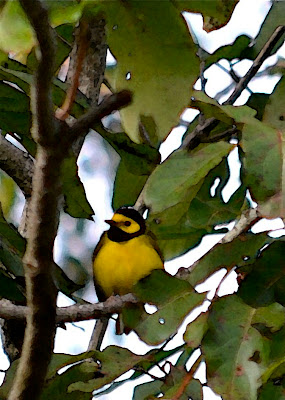I was so excited over finding my second black widow that I didn't even think to take her picture before moving her away from the nature center's front door (and safely relocating her to a big log in the woods well away from the building)--she was hanging out with an orb weaver who had staked claim to that particular wall the week before. Most unusual in that the widow was out in the open and that two large predators were less than three inches apart and leaving each other alone.
Shiny black, distinct shape (doesn't get more Halloween-y than that, eh?) and, of course, the hourglass. (I'm told we have two species here, Northern and Southern Black Widow. Southern's hourglass is typically one marking, Northern is made up of two separate triangles. This one sort of hits middle ground. I don't care: it's a black widow.)



















































